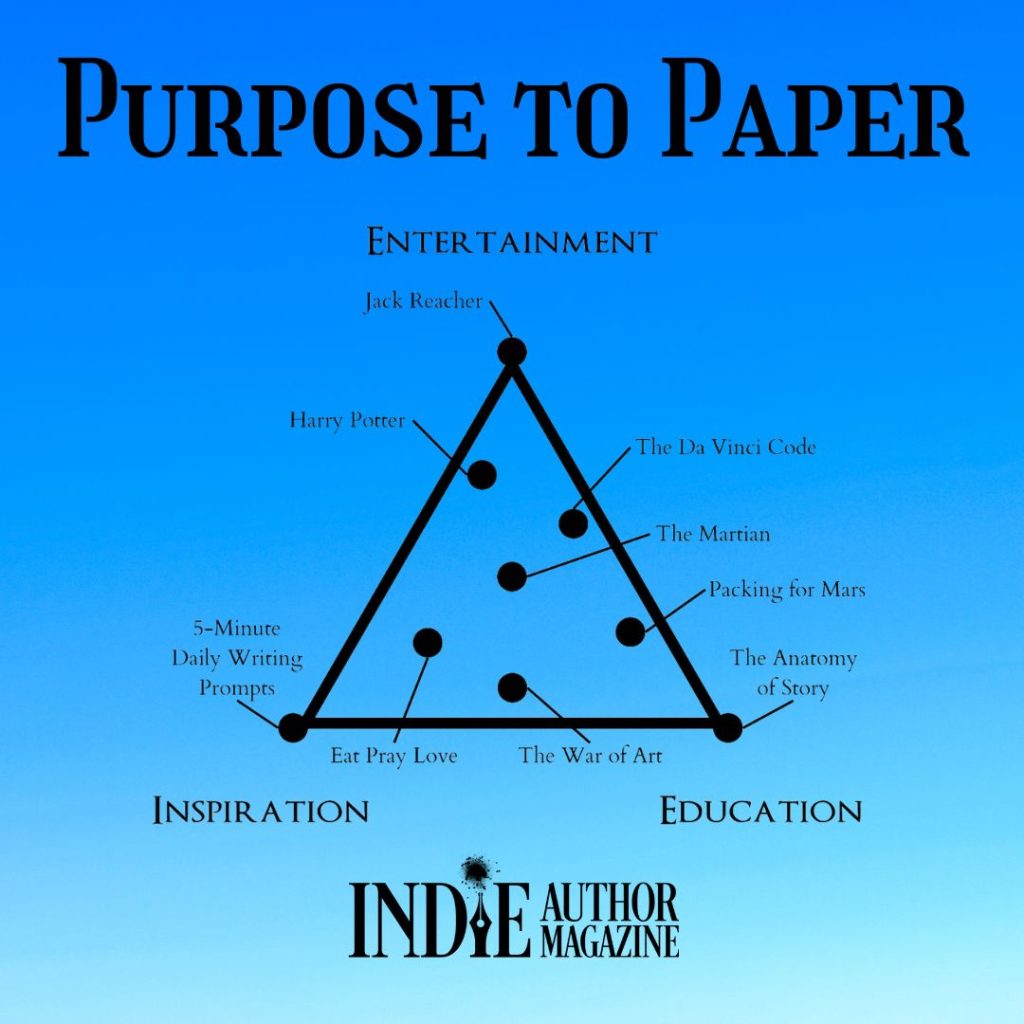Guest Author Megan Haskell Offers Her Advice on Strategizing Better Reader Relationships
Seasoned indie authors understand: for your business’s long-term growth, quality often outranks quantity when it comes to reader relationships. But how do you ensure you’re connecting with the right audience? In the second part of her series on finding your ideal author business strategy, Megan Haskell, co-founder of the Author Wheel, shares the importance of incorporating your story’s message into your marketing. Find your story’s purpose—be it entertainment, education, or inspiration, or a combination of the three—and you’ll be one step closer to finding the people who like it best.
***
Have you ever thought about your purpose for writing? I don’t mean the entrepreneurial business reasons but the impact you hope to have on the world. What do you want your reader to take away from your book?
Writing often begins with the ideas in our heads. We want to tell our story or share our experience. Too often, we forget to consider how our words will reach our readers on a head, heart, or gut level. However, dialing in on that reader experience can help shape our business decisions and clear the way for success. With your purpose in mind, it becomes easier to write your book, plan your launch, or create a long-term marketing campaign that will align with your readers’ interests.
There are three primary purposes for writing anything for an audience: entertainment, education, or inspiration. Broadly speaking, fiction is entertaining, while how-to writing is educational, and a memoir might inspire the reader with a real-world story of overcoming adversity.
However, there are more subtle impacts that affect readers across genres, and your particular blend will appeal to a specific type of reader. For example, Andy Weir’s Sci-Fi novel The Martian is balanced across the three impacts. It provides entertainment through life-and-death stakes, education in the character’s science-based responses to his trials, and inspiration by encouraging readers to stay calm and problem-solve in the face of adversity. It appeals to a reader who wants realistic Science Fiction action with a message of hope and survival.
Other stories might have a stronger emphasis on one or two of the purposes. Elizabeth Gilbert’s Eat Pray Love is inspirational and culturally educational, and Dan Brown’s The Da Vinci Code is an Action Thriller that uses history and puzzles to its educational advantage.
Your purpose isn’t a singular choice. More likely, it’s a continuum, triangulated by the three priorities.
Why Should You Care?
Readers will naturally gravitate toward stories—and to a sweet spot on the chart—that fits their own needs or interests. Understanding your writing purpose will equip you with the information you need to target that niche audience.
Let’s say you write Historical Romance. If you, as a writer, enjoy historical research and include facts or true events of the era in which your book is set, then it’s likely that your purpose is both entertainment and education: you want to tell a good Romance story while sharing your love of history. Your book might fall somewhere along the entertainment-education line.
If this is the case, tailoring your social media marketing to include historical facts, writing an afterword that explains where you’ve been historically accurate or taken creative license, or participating in an online fan group for that era might help you find and engage with your ideal readers.
By aligning your purpose with your reader’s interests, you can find the sweet spot between art and commerce.
Putting It into Practice
Take a closer look at your own work. How can you use your purpose to reach readers in new ways? Here are some prompts to help.
- For fiction, consider your setting, theme, characters, and tropes. For nonfiction, think about your voice, message, and subject. Which elements lend themselves to which impacts?
- Prioritize the impacts for your book. Rank their importance on a scale of zero to three, with three being most important.
- Plot each of your books on the impact triangle. Are they all the same? For brand consistency, they should probably be in the same general region. If not, you might consider whether a pen name would be helpful for marketing certain books or series.
- Create a list of words and phrases that describe your desired impact on your audience.
- Brainstorm new marketing ideas, taglines, or promotional opportunities you might use to appeal to your target audience.
Once you understand the underlying intention of your work, it becomes easier to communicate your message to the world and attract the right readers to your book. Suddenly, that elusive thing—your author strategy—goes from an abstract concept to a natural extension of who you are as a writer.
You’ve been putting your purpose on the page all along. Now lean in and share it.
Megan Haskell

